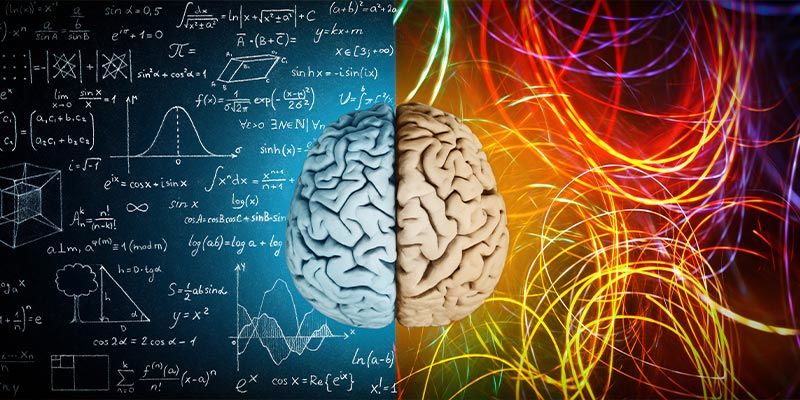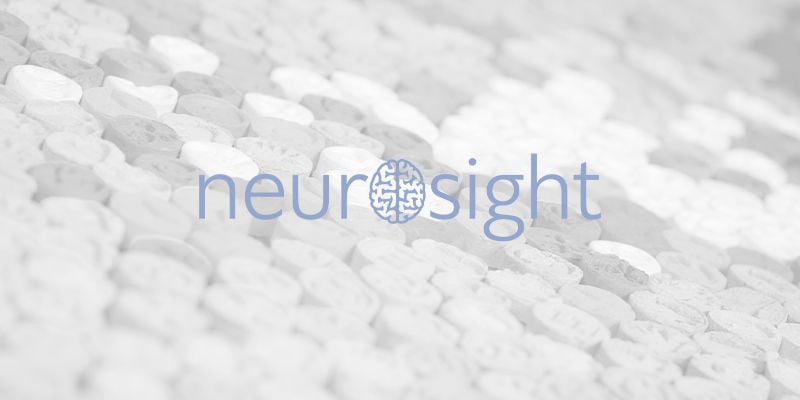
An Interview With NeuroSight
In this episode of Zamnesia Talks, we discuss drug policy, harm reduction strategies, the black market, and gaping holes in available research. To find out more, read the summary below or listen to the embedded link.
In the latest episode of Zamnesia Talks, we spoke to Arda and Ivan from NeuroSight, an NGO focused on drug-related harm reduction. The full episode is embedded below, and can be found on Spotify.
The following article is a very brief summary of some of the main points of the conversation.
What is NeuroSight?

NeuroSight is an NGO focused on drug use that, in the words of their creators, “help[s] organisations navigate harm reduction through policy, research and education”. The organisation consists of three people:
- Arda Ozcubukcu: A policy researcher with a background in neuroscience, Ozcubukcu is also a Communication Assistant at Clerkenwell Health and Business Development Executive at Drugs and Me (NeuroSight’s sister organisation).
- Ivan Ezquerra-Romano: Ezquerra-Romano is a researcher in neuroscience and education, and is currently developing an AI model to provide immediate assistance with drug-related queries. He is a co-founder and executive of Drugs and Me.
- Paul North: North is a criminologist and addiction specialist and director at Volteface, a leading drug advocacy reform group.
What does NeuroSight do?
NeuroSight seeks to arm organisations with the necessary knowledge and tools and reduce the harm caused by drug use. As an example, they consult with universities so that they better understand how to deal with and manage drug use. In their own words, they hope to see “organisations change their drug policy from ‘zero tolerance’ to ‘harm reduction’”.
Should drug legislation be relaxed?

It seems clear that drug legislation should be adapted and relaxed. That’s not necessarily to say that all drugs should be decriminalised, but merely that a far more informed and insightful approach to drug legislation could have profound effects.
One issue with current legislation is that it lumps drugs together in categories that tell us little about the drugs themselves. As such, drugs such as psilocybin (magic mushrooms) are classified as Schedule 1 in the UK, grouping them in the same legal category as heroin and crack cocaine, despite the fact that psilocybin is likely to have some therapeutic uses and appears to be extremely safe by all measures. This is but one example that demonstrates how out of touch with reality drug policy is.
And even where drug policy appears to correlate with the dangers a drug poses, there are still serious questions as to whether the punitive legislation that currently exists in most of the world has any positive impact regarding harm reduction. There is much evidence to suggest that the strict criminalisation of drugs causes people to take them in more dangerous ways, fear seeking help, and that criminal prosecution can push people into destructive loops of addiction and crime.
What effects would relaxed drug legislation have?
Given that, it seems likely that more compassionate and sympathetic drug legislation would be the first port of call for any government that seriously wants to tackle the effects of drug misuse, rather than simply be seen as being “tough on crime”.
Primarily, relaxed drug legislation would benefit users, both those who use drugs responsibly and those who misuse drugs and suffer from substance abuse disorders.
Moreover, depending on how lax legislation became and whether some drugs might be legalized, new industries could appear that would create jobs and tax revenue. For instance, the US is clear evidence that when a drug goes from being illegal to legal—as in the case of cannabis—then an entire industry, once illegal, can rapidly benefit the economy.
And even where drugs are just decriminalised, the darker side of drug-related crime can more easily be mitigated. For instance, where people are allowed to grow their own cannabis, they no longer need to rely on criminal gangs who grow the crop, and can source it without any harm being caused.
The case for more relaxed drug legislation is strong!
What is the best way to reduce harm when using drugs?

Knowledge. Adequate knowledge and education are key to reducing harm. There are several levels on which this applies.
First, those who use drugs will be significantly safer if they know what they are taking, what the effects of the drug genuinely are, how drugs interact with one another, and how to safely take a drug. So on the level of the individual user, knowledge and insight are key.
Since the rise of the internet, drug users have mostly educated themselves on forums that are incredibly compassionate and informed. Despite the success of these spaces, it’s a shame that schools and government organisations are continually failing to offer any sort of meaningful drug education.
This leads us to the second level, that of institutions. Schools, universities, workplaces, and other institutions can all help to reduce drug-related harm if those who work in them are properly educated regarding drugs. That doesn’t necessarily mean having a wealth of information about how drugs work, but rather being able to spot the signs of drug misuse, and fostering a compassionate attitude towards these issues—rather than a judgemental or moral one.
Finally, the more knowledge we have on a societal and global level, the better equipped we are to combat drug-related harm. Take for instance the fact that the illegality of many drugs means it can be very difficult to conduct proper clinical research and understand their effects and uses. Not only does this mean that we don’t know how they can be used beneficially, but that in many cases we’re missing essential information on how drugs work, and how they may or may not cause harm.
Missing data from drug use studies

A prime example of the above point is that we know very little about how drugs affect different people, at different stages of their lives. Mostly, our understanding of drugs is that x does y, but this is a very undeveloped view.
For example, new evidence is beginning to suggest that certain drugs may have different effects on women depending on where they are during their menstrual cycle. This is thought to be due to different hormone levels, meaning that the drugs exert their effects differently. Understanding how factors such as these work is essential if we are to build a developed picture of what safe drug use looks like.
What if it turned out that certain drugs were safe to take for women when they’re not menstruating, but were much more dangerous when they were? Understanding this would give individuals much more agency and control over how they take drugs, and could ultimately lead to fewer preventable deaths.
The promise of psychedelics in medicine

It is, by now, well-known that psychedelic drugs show great potential in treating and managing mental health disorders. From PTSD to depression and anxiety, it seems that psychedelics and ketamine might offer solutions that existing treatments don’t.
While it seems certain that psychedelics will end up offering novel and effective treatments, we should also proceed with caution and not get carried away with the hype. For instance, ketamine is a highly popular “psychedelic” medicine, and is now being used in multiple countries to treat depression. But it’s important to bear in mind that we still don’t know exactly how this drug might exert its effects, and we do know that ketamine is addictive and can be harmful.
So this shows that, just because people are becoming aware that certain drugs might have more use than previously thought, we shouldn’t just assume that all changes will be for the better.
NeuroSight: Changing the way we see drugs

NeuroSight is an exciting organisation with individuals at the helm who are genuinely passionate and compassionate about their work and believe in societies in which individuals, organisations, and governments can take a more informed and more intelligent approach to drug use, ultimately leading to less harm and more fun.
If you’re interested by what you’ve read here, be sure to listen to the full episode, and check out the NeuroSight website.
-
 17 min
23 September 2022
An Interview With Jon Hopkins About Music For Psychedelic...
This conversation with Jon Hopkins explores the inspiration and motivation that led to the creation of Music for Psychedelic Therapy, a new album designed to be used alongside psychedelics to...
17 min
23 September 2022
An Interview With Jon Hopkins About Music For Psychedelic...
This conversation with Jon Hopkins explores the inspiration and motivation that led to the creation of Music for Psychedelic Therapy, a new album designed to be used alongside psychedelics to...
-
 9 min
8 April 2022
Top 10 Ways To Get High Without Drugs
Wanna get high—without drugs? In this article, we explore what it means to "get high", and provide 10 natural ways to experience a high without the influence of psychotropic drugs. From lucid...
9 min
8 April 2022
Top 10 Ways To Get High Without Drugs
Wanna get high—without drugs? In this article, we explore what it means to "get high", and provide 10 natural ways to experience a high without the influence of psychotropic drugs. From lucid...
-
 4 min
5 February 2019
9 (Legal) Drugs That Will Induce a Psychedelic Trip
While most psychedelic substances are considered illegal in many countries, there are a few that buck the trend. From plants of the rain forest used for powerful psychedelic brews, to the mystical...
4 min
5 February 2019
9 (Legal) Drugs That Will Induce a Psychedelic Trip
While most psychedelic substances are considered illegal in many countries, there are a few that buck the trend. From plants of the rain forest used for powerful psychedelic brews, to the mystical...
-
 1 min
10 May 2016
Interviewing Jorge Cervantes: Father Of The Cannabis Grow Guide
Cannabis expos are a great way to meet some of the famous names of the cannabis world. We bumped into Jorge Cervantes, who graciously took the time to tell us what he has been up to.
1 min
10 May 2016
Interviewing Jorge Cervantes: Father Of The Cannabis Grow Guide
Cannabis expos are a great way to meet some of the famous names of the cannabis world. We bumped into Jorge Cervantes, who graciously took the time to tell us what he has been up to.














 United States
United States










